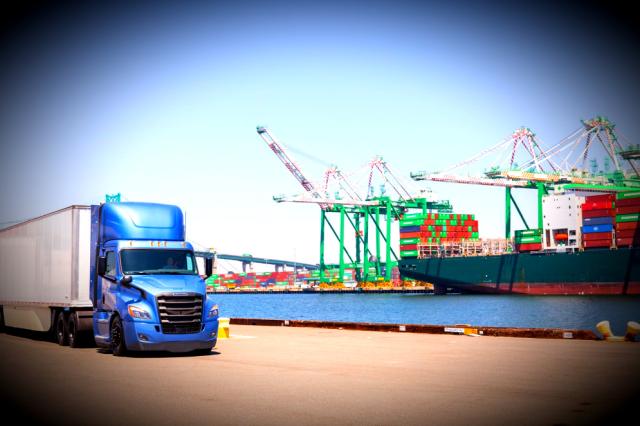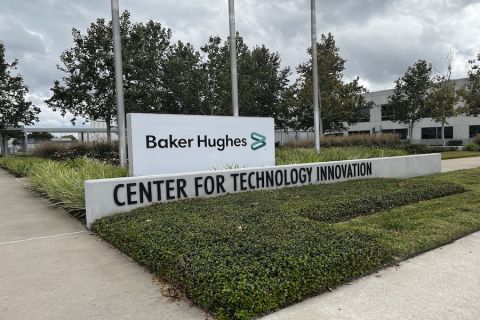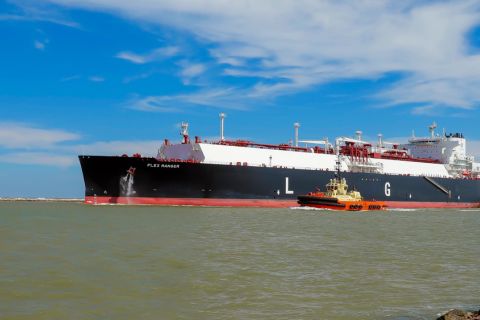
The ports of Los Angeles and Long Beach require trucks and dock equipment to use natural gas or electricity to reach zero emissions by 2035. (Source: NGVAmerica)
[Editor's note: A version of this story appears in the August 2019 edition of Oil and Gas Investor. Subscribe to the magazine here.]
This summer, UPS announced a historic, seven-year deal with Clean Energy Fuels Corp. The package delivery company said that through 2026, it will buy 170 million gallon equivalents (MMGE) of renewable natural gas (RNG).
This is the biggest purchase of RNG in American history, and that makes sense, given the size of the UPS fleet and its commitment to reduce emissions—UPS has set a goal of alternative fuels constituting up to 40% of its ground fuel consumption by 2025. The company has 6,100 vehicles worldwide that now use either CNG or LNG. It also uses propane and has hybrid and electric vehicles.
Bravo UPS; this is great news for the environment—experts say heavy-duty trucks and buses are the No. 1 source of emissions in urban areas. But note that all the gas fueling UPS trucks is not coming from wells drilled by the nation’s natural gas producers. Instead, it is RNG, which is gas derived from methane emitted by landfills, dairy and hog farm waste and other renewable sources.
Clean Energy Fuels, a company built on championing natural gas for vehicles, sells both gas from wells and from RNG. As of December 2018, the company served roughly 1,000 fleet customers operating some 47,000 natural gas vehicles (NGVs). To do this it owned, operated or supplied 530 natural gas fueling stations in 43 states and four provinces in Canada.
The brainchild of oilman and billionaire energy investor T. Boone Pickens and current CEO Andrew J. Littlefair, Clean Energy Fuels was incorporated in 2001 based on some predecessor companies Pickens owned. It went public in 2007, and is based in Newport Beach, Calif. In 1997, Pickens had founded Pickens Fuel Corp., the predecessor company to Clean Energy. Then, Pickens was noted for the Pickens Plan, his $100 million campaign to end America’s dependence on OPEC oil. He traveled the country urging that all heavy-duty trucks convert to natural gas.
RELATED:
T. Boone Pickens' ETF To Replace Crude Stocks With Renewables: Report
As the shale gale took off, he and several other gas producers later founded America’s Natural Gas Alliance in 2009, which merged into the API in 2015. This occurred when the natural gas shale plays were being unveiled at a fast clip—first the Barnett, then the Fayetteville, the Haynesville, the Marcellus—and the land grab in them was at its height. E&P executives extolled the enormous potential benefits of the huge gas resources that lay before them.
Shale gas production tripled between 2007 and 2011 and by July 2012 it had risen to nearly 70 billion cubic feet a day (Bcf/d). The growth continues today as associated gas from the Permian Basin competes with production growth still seen in the Marcellus Shale. Today the U.S. produces more than 88 Bcf/d of gas and is exporting about 6 Bcf/d.
In an interview with Forbes in 2011, the late Chesapeake Energy Corp. founder and CEO Aubrey McClendon, one of the industry’s most vocal advocates of natural gas, said, “… I look forward to the day when Americans can fill up on American natural gas rather than OPEC oil and at half the price of OPEC oil, and at great benefit to the American environment.”
Since then, Clean Energy Fuels has built the biggest network of both public and private natural gas stations in North America, and during the past five years has seen sales of Redeem, its trademarked RNG fuel, skyrocket. In the first quarter of 2019, the company said total gas volumes increased 12%, but Redeem volume increased almost 90%; that’s before its recent agreement with UPS was in place. Last year, it inked a deal to buy biomethane gas from BP Plc, and it also has a deal with Total.
NGVs Today
With such an abundance of natural gas supply available, and many ardent supporters of its use, just how much natural gas is the nation’s vehicle fleet using instead of diesel or gasoline? Natural gas vehicles have continued to grow in popularity as more municipalities and companies owning large vehicle fleets, whether trucks or buses, continue to work on reducing fossil-fuel emissions.
Worldwide, about 27 million vehicles are fueled by natural gas, but adoption of NGVs in the U.S. seems to have slowed. In the U.S., some 175,000 to 185,000 NGVs are in use: 11,000 are buses, 17,000 are waste trucks, 5,500 are school buses used in 150 school districts. (Data includes all land-based vehicles, including two-wheelers, off-road and vehicles that have been converted to natural gas.)
“We are a mature technology, and all the kinks have been worked out. We are commercially proven and ready. There are 2,000 stations across the country today for CNG and LNG vehicles,” Daniel Gage, president of NGVAmerica, told Oil and Gas Investor.
In the U.S., the light-duty market (mostly cars and taxis) is focused on transitioning to electricity rather than natural gas, whereas the heavy-duty fleet (long-haul freight trucks and construction equipment) is moving toward using more CNG, LNG or RNG.
LNG is more popular and efficient for high-horse-power uses like long-haul trucking and marine applications, Some 11,000 freight haulers run on either CNG or LNG.
CNG appears to be cheaper and easier for buses and taxis. About 60% of all waste or trash trucks run on natural gas, with Waste Management owning the largest such fleet with over 6,000 NGV trucks—plus, it recycles trash from landfills to make its own RNG.
Competition Arises
Meanwhile, U.S. school districts now have over 17,000 propane-powered buses, and Texas alone has over 3,000 propane buses, according to the Propane Council of Texas and its national parent, the Propane Education & Research Council.
However, the rise of electric vehicles (EVs) that can be charged, or powered by batteries, does pose a threat to NGVs in the arena of public opinion, Gage said, because EVs are thought to be less polluting than NGVs. “The electricity supporters have done a good job of convincing the public that EVs are better, but that is just not the case.
“Electric vehicles today are where natural gas vehicles were 20 years ago. The reality is they are just not there yet and are still too expensive. If anyone’s driving an electric vehicle, it’s an experiment or a demonstration,” Gage told Investor. “We’ve got to get the battery costs lower; they are just not affordable for most private or municipal fleets right now.”
Gage cited some advantages NGVs have over EVs. “A natural gas engine is cleaner than anything else available now, and is 90% cleaner than the cleanest diesel engine available today,” he said. NGVs are able to be refueled faster than EVs at a charging station, he added.
In July, the city of Toronto, which operates North America’s largest bus fleet after New York and Los Angeles, said it would transition to all-electric buses as soon as possible, bypassing CNG.
About a third of North America’s transit buses run on CNG or LNG. “It is our contention that this percentage is peaking and will begin to gradually decline as EVs increasingly take share,” said a new report by Raymond James. “However, diesel is still the mainstay of bus fleets, accounting for 40% of the total. Toronto is a case study of how some transit agencies are shifting directly from diesel to EVs, i.e., bypassing natural gas altogether.”
Even though there is competition from other fuel sources, the use of NGVs continues to grow. The Energy Information Administration says that in 2018, NGVs consumed about 43.4 Bcf, up from 22.8 Bcf in 2005. And, about 50 companies in the U.S. manufacture 100 models of natural gas-burning engines and vehicles.
Leslie Haines can be reached at lhaines@hartenergy.com.
Recommended Reading
Biden Administration Hits the Brake on New LNG Export Projects
2024-01-26 - As climate activists declare a win, the Department of Energy secretary says the pause is needed to update current policy.
Rystad Sees Little Support for Henry Hub in Coming Weeks
2024-01-26 - Rystad Energy sees little support for Henry Hub prices in the U.S. as dry gas production rises after the Jan. 17 Arctic freeze that impacted all of the Lower 48 states.
Baker Hughes Detects LNG Slowdown Solutions, Global Opportunities
2024-01-26 - Baker Hughes’ fourth quarter earnings call confronts Biden’s halt on LNG permitting with “solve itself” attitude.
Texas LNG Export Terminal Completes Required Permitting for FID
2024-01-26 - Glenfarne expects the Texas LNG project’s commercialization to be completed in the first half of 2024.
What's Affecting Oil Prices This Week? (Jan. 29, 2024)
2024-01-29 - For the upcoming week, Stratas Advisors forecast that increase in oil prices will be moderated likely due to the U.S. being cautious in response to the recent attack on U.S. troops.





